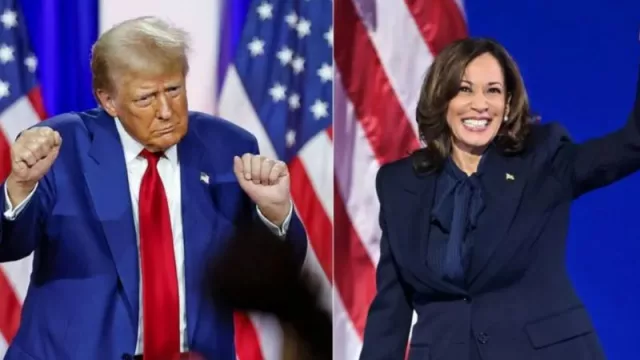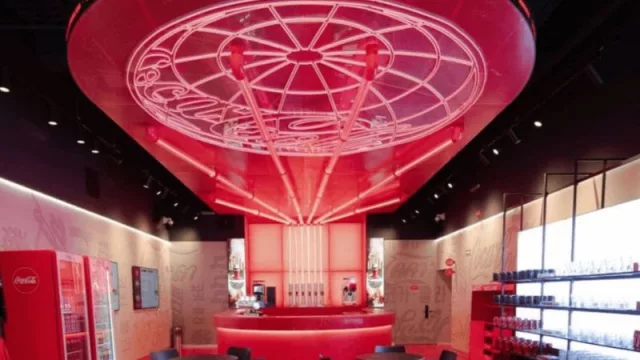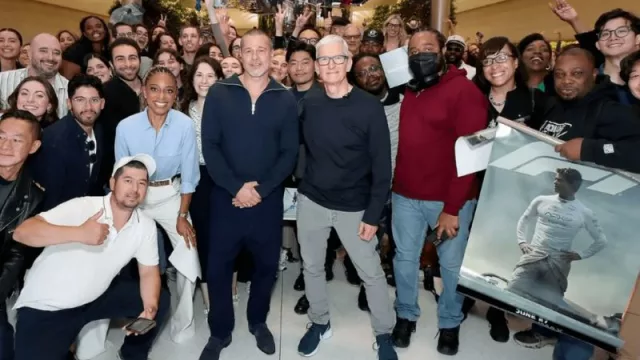Summary and Tips
Key Points:
-
Donald Trump leads Kamala Harris in the Latino vote by more than 10 points.
-
Disenchantment with the Democrats has escalated since the Obama presidency.
-
Harris's proposals have failed to resonate positively among Latinos.
-
The Latino community has become increasingly critical of Biden's administration, particularly on economic and foreign policy issues.
-
The Latino vote currently represents 15% of the electorate in the USA.
The Disenchantment with the Democrats
Since the historic victory of Barack Obama, who was able to capture the Latino vote en masse, the relationship between this community and the Democratic Party has deteriorated significantly. “Latinos literally feel let down by the Democrats,” highlights a recent analysis, reflecting the sentiment of many who voted for Obama but now feel abandoned.
The USA TODAY poll shows 38% for Harris and 49% for Trump. Obama's visit to Cuba and the lack of effective action regarding the Venezuelan crisis have left a profound mark. “The Cuban-American community, for instance, feels betrayed,” asserts a community leader in Miami. The perception that Democrats have not done enough to address the crises affecting their countries of origin has fueled a sense of disillusionment.
-
IG: @infonegociosmiami
Kamala Harris's Response
Despite Kamala Harris's attempts to staunch the decline in the Democratic Party's popularity among Latinos, her efforts have not resonated as anticipated. In a recent interview with Telemundo, Harris remarked: “Latino voters understand that they want a president who invests in their dreams.” However, these words seem insufficient to counteract the prevailing skepticism.
Harris's proposal to eliminate the requirement of a college degree for over 500,000 federal positions and to increase funding for Hispanic entrepreneurs is a step in the right direction, but “actions speak louder than words,” emphasizes a political analyst. The absence of a decisive approach regarding the situation in Venezuela remains a critical point that alienates many Latino voters
The Rise of Trump
In contrast, Donald Trump has adeptly capitalized on the existing discontent. At a recent event at his golf club in Doral, Miami, Trump surrounded himself with Latino entrepreneurs who openly criticized Biden's administration. “The economy is viewed as terrible by Latinos,” emphasize several attendees, who see in Trump a glimmer of hope for economic recovery.
Trump's rhetoric may be controversial, yet his focus on tax cuts and market deregulation has resonated with a business sector seeking stability and growth. “Trump has improved his image among Latinos compared to the elections of 2016 and 2020,” states a New York Times study, noting that Latino men are more likely to vote for him than women.
Strategies to Capture the Latino Vote
With only two weeks remaining until the elections, both candidates have turned their focus toward securing the Latino vote. The key for the Republicans will be not only to capture votes on Election Day but also to encourage early voting, both by mail and in person. Trump's strategy centers on connecting with voters through concrete economic proposals and collaborations with local leaders.
On the other hand, Harris aims to appeal to emotion and personal connection. “I understand the dreams that people have for their children and that they are willing to work hard to achieve them,” she asserted during her speech. However, the effectiveness of these strategies hinges on authenticity and the perceived commitment from Latino voters.
Polarization Within the Latino Community (and Across the USA)
The 2024 election is shaping up to be a contest not just between candidates, but also a reflection of the current state of the Latino community in the U.S. A notable fact is the increasing polarization among different groups within this community. For instance, “Cuban Americans in Florida have very different concerns than Mexicans in California,” comments an expert in electoral demographics. This suggests that a one-size-fits-all strategy will not suffice to capture the attention of all Latino voters.
The cultural, economic, and social diversity of Latinos in the U.S. means that campaigns must be highly personalized. The absence of a message that directly addresses the needs of these groups could result in a significant loss of votes.
The Fear of Repeating and Expanding Mistakes
Democrats are acutely aware that the 2024 election could reflect the “worst election in history” regarding Latino support. “The fear is that this will be similar with the Jewish community, entrepreneurs, and business owners,” warns a political analyst. This concern is fueled by the perception that Democrats have not fulfilled their promises, which could lead to a massive exodus of votes toward Trump.
Therefore, it is crucial for Democrats to focus not only on campaign messaging but also on demonstrating a genuine commitment to addressing the community's concerns. “The change must be palpable and visible,” emphasizes a community leader.
Conclusions
As Election Day approaches, both Trump and Harris are in a frantic race to capture the Latino vote—a group that is not only crucial in numerical terms but can also decisively influence the electoral outcome. The USA TODAY poll is a clear indicator that the dynamics have shifted and that the Latino community is willing to explore new political options.
The disenchantment with Democrats and the resurgence of support for Trump represent a change in the political landscape that cannot be ignored. For Republicans, the key lies in mobilizing voters not only on Election Day but also through effective early voting. For Democrats, the urgency to reconnect with a community that feels betrayed is more pressing than ever.
Frequently Asked Questions (FAQs)
Why are Latinos changing their support toward Trump?
Many Latinos feel disappointed with Democratic policies, particularly on economic and immigration issues.
What proposals has Kamala Harris presented to attract Latino voters?
Harris has promised to eliminate college degree requirements for certain federal jobs and to increase funding for Hispanic entrepreneurs.
What is the importance of the Latino vote in the 2024 elections?
The Latino vote represents approximately 15% of the electoral population in the U.S., and their support can be decisive in key states.
How can Latino voters participate more in the elections?
They are encouraged to vote early, both by mail and in person, to ensure their voices are heard.
What strategies are candidates using to capture the Latino vote?
Both candidates are hosting community events and utilizing messages that directly address the concerns of Latino voters.
With the election date looming, the challenge for both candidates lies in how to navigate this growing discontent and reconnect with a community that, despite its diversity, seeks solutions and a better future in the country they have chosen to call home.
The upcoming electoral battle will not only test political strategies but also present an opportunity to redefine the relationships between political leaders and the Latino community in the U.S.
-
Infonegocios RED: 4.5 million Anglophone Latinos reading business news daily.
- Sign Up for Free: Register and receive our newsletter by simply leaving your email and name here.
-
Contacts: [email protected] or [email protected]












Tu opinión enriquece este artículo: